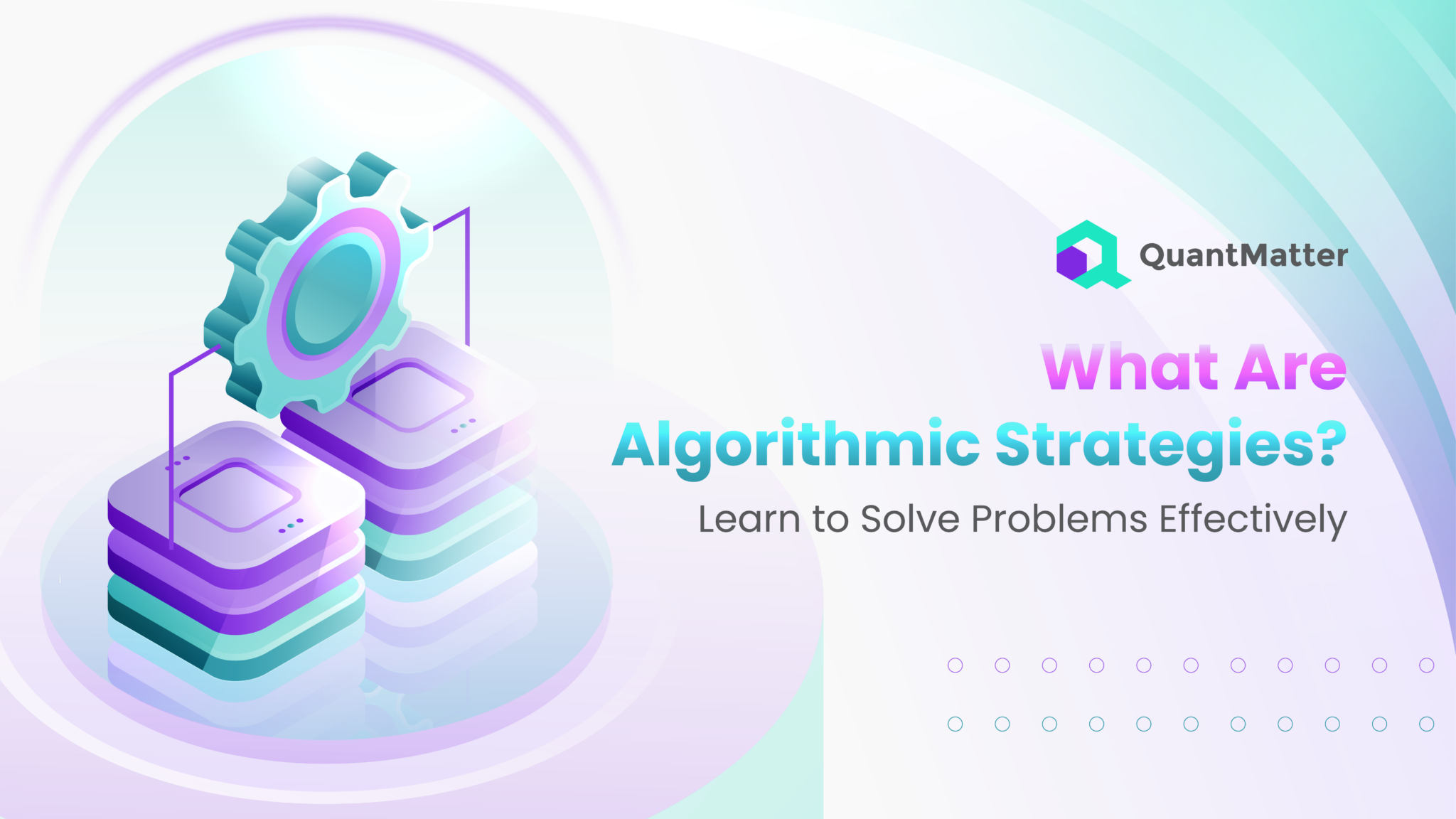
In today’s technology-driven world, problem-solving is a critical skill that transcends industries and professions. Whether you’re a software developer, data analyst, or just someone seeking logical solutions to daily challenges, understanding algorithmic strategies can revolutionize the way you approach problems. Algorithms are more than just technical formulas—they are systematic approaches to breaking down complex tasks into manageable steps.
This article dives into the essentials of algorithmic strategies, explaining what they are, why they matter, and how you can apply them in real-life scenarios. We’ll explore the foundational concepts, modern applications, and practical techniques to master this critical skill. By the end of this guide, you’ll have a solid framework to analyze problems and solve them effectively.
With the growing complexity of systems and data, algorithmic thinking equips us to navigate challenges with precision and efficiency. Let’s break it all down, one step at a time.
What Are Algorithmic Strategies?

Algorithmic strategies are systematic methods for solving problems through a series of well-defined steps or rules. At their core, algorithms aim to simplify complex issues, providing a step-by-step solution that is both logical and repeatable.
For example, consider a daily challenge like planning a route for errands. An algorithmic strategy would involve identifying all locations, calculating the shortest path, and executing the trip efficiently. This is precisely how navigation apps like Google Maps work.
There are two main categories of algorithmic strategies:
- Deterministic Strategies: These follow a clear set of rules, guaranteeing the same outcome every time they are applied. For example, sorting a list of numbers using the bubble sort algorithm always produces a sorted list.
- Probabilistic Strategies: These involve some level of randomness or estimation. Machine learning models often rely on these to make predictions.
Understanding these categories helps you decide which strategy suits a particular problem best. Whether you’re optimizing a schedule or developing software, the right approach can save time and resources.
The Building Blocks of Algorithmic Thinking

At the heart of algorithmic strategies lies a series of universal principles. These building blocks are essential for tackling problems systematically:
1. Divide and Conquer
Breaking a large problem into smaller, more manageable parts is a cornerstone of algorithmic thinking. For instance, when debugging code, identifying individual modules and testing them separately simplifies the process.
2. Pattern Recognition
Recognizing recurring patterns allows you to reuse solutions for similar problems. This approach is common in data compression algorithms, where patterns in data are identified to reduce file sizes.
3. Abstraction
Abstraction involves focusing on the most critical aspects of a problem while ignoring irrelevant details. When designing software, for example, you might concentrate on user requirements rather than implementation specifics.
4. Optimization
This principle focuses on finding the best possible solution, often under constraints like time or resources. Algorithms like Dijkstra’s for shortest-path problems exemplify this concept.
Each of these principles forms the foundation of algorithmic strategies. By mastering them, you can address a wide range of challenges with confidence.
Also Read: What is the Crank Nicolson Method? A Beginner’s Guide
Popular Types of Algorithmic Strategies

Algorithmic strategies are versatile tools designed to address a wide range of problems efficiently. Each strategy is tailored to specific problem types, and understanding their unique characteristics can help you choose the best approach for your challenges. Below is a detailed exploration of the most commonly used algorithmic strategies, their principles, and applications.
1. Greedy Algorithms
Greedy algorithms work by making the most optimal choice at each step of the process, aiming to reach a solution that is locally optimal. The key idea is that these locally optimal choices will lead to a globally optimal solution for certain types of problems.
For example, in scheduling problems where tasks must be completed within given deadlines, greedy algorithms prioritize tasks based on criteria such as shortest deadline or highest profit. Similarly, resource allocation problems, like selecting items to maximize value within a budget, often employ greedy approaches for their simplicity and efficiency.
However, greedy algorithms are not foolproof. They work best when the problem exhibits the greedy-choice property, meaning that local decisions always lead to a global solution. When this property is absent, greedy approaches may produce suboptimal results.
2. Dynamic Programming
Dynamic programming is a powerful strategy used to solve complex problems by breaking them into smaller, overlapping subproblems. These subproblems are solved once, and their results are stored for future reference, a process known as memoization.
A classic example of dynamic programming is the knapsack problem, where you aim to maximize the value of items placed in a knapsack without exceeding its weight capacity. By analyzing smaller subsets of items and building upon their solutions, dynamic programming avoids redundant calculations and ensures efficiency.
Other notable examples include calculating the Fibonacci sequence, solving shortest-path problems like those tackled by Dijkstra’s algorithm, and optimizing matrix multiplication orders. The strength of dynamic programming lies in its ability to transform exponential-time problems into polynomial-time solutions, making it invaluable for tackling optimization challenges.
3. Backtracking
Backtracking is a trial-and-error strategy that systematically explores all possible solutions for a problem. When a potential solution fails to meet the criteria, backtracking “backtracks” to a previous state and explores other possibilities. This recursive process ensures that all viable solutions are considered.
Sudoku solvers provide an excellent example of backtracking in action. The algorithm tests numbers in each empty cell, backtracks when a conflict arises, and continues until a valid solution is found. Other applications include solving maze problems, n-queens problems, and generating permutations or combinations.
While backtracking can be time-consuming for large problems, its exhaustive approach guarantees finding a solution if one exists. Optimizations such as pruning—eliminating paths that cannot possibly lead to a solution—help improve its efficiency.
4. Divide and Conquer
Divide and conquer is a fundamental strategy that breaks a problem into smaller, independent subproblems, solves each one separately, and combines their results to form the final solution. This approach is particularly effective for problems that can be naturally divided into smaller parts.
Sorting algorithms like merge sort and quicksort exemplify this strategy. Merge sort divides the input array into halves, sorts each half recursively, and then merges the sorted halves. Quicksort selects a pivot element, partitions the array around it, and recursively sorts the subarrays.
Divide and conquer is not limited to sorting. It’s also widely used in algorithms for matrix multiplication, closest pair of points in computational geometry, and fast Fourier transforms. Its recursive nature makes it an elegant and powerful tool for tackling large problems by focusing on smaller, manageable components.
Choosing the Right Strategy
The choice of algorithmic strategy depends on the nature of the problem, its constraints, and the desired outcome. For instance:
- Greedy algorithms are ideal for problems with the greedy-choice property, offering simplicity and speed.
- Dynamic programming excels in optimization problems with overlapping subproblems, providing efficient and accurate solutions.
- Backtracking ensures exhaustive exploration, making it suitable for problems with multiple potential solutions.
- Divide and conquer shines in scenarios where problems can be split into independent parts, offering scalable and elegant solutions.
By understanding these strategies, you can select the right tool for the job, ensuring your problem-solving process is both efficient and effective. Whether tackling a real-world issue or solving a computational challenge, mastering these algorithmic strategies will significantly enhance your approach.
How to Develop Algorithmic Thinking
Algorithmic thinking is not an innate skill—it is something you can cultivate and refine with consistent effort and the right approach. This way of thinking trains your brain to break down complex problems into manageable steps and devise logical solutions. Below, we’ll explore effective methods to develop this invaluable skill in greater detail.
1. Practice Problem-Solving
One of the best ways to build algorithmic thinking is through hands-on problem-solving. Platforms like LeetCode, HackerRank, and Codewars provide an extensive collection of algorithmic challenges across various difficulty levels. These platforms are particularly beneficial for practicing different types of algorithms, from basic sorting techniques to advanced dynamic programming problems.
Start with beginner-level problems and gradually work your way up to more challenging ones. Focus on understanding the logic behind the solution rather than simply arriving at the answer. Over time, you’ll develop an intuitive grasp of how to approach new problems and adapt strategies to solve them effectively.
2. Learn the Basics
Before diving into complex problems, it’s essential to build a strong foundation in the fundamentals. This includes familiarizing yourself with common data structures such as:
- Arrays: Ideal for storing and accessing sequential data.
- Linked Lists: Useful for dynamic memory allocation and insertion operations.
- Stacks and Queues: Perfect for tasks involving order or priority.
- Trees and Graphs: Critical for hierarchical or network-based problems.
Understanding these data structures allows you to choose the right tools for your algorithmic solutions. For example, graphs are ideal for pathfinding problems, while stacks are well-suited for undo functionality in applications. Learning their use cases and implementation will greatly enhance your problem-solving abilities.
3. Analyze Algorithms
To think algorithmically, you must understand the logic behind popular algorithms. Study classic algorithms like:
- Sorting Algorithms (e.g., bubble sort, merge sort, quicksort) to learn how to organize data efficiently.
- Searching Algorithms (e.g., binary search, depth-first search) to understand how to locate elements or traverse data structures.
As you analyze these algorithms, pay attention to their time and space complexity. Concepts like Big-O notation help you evaluate the efficiency of an algorithm, allowing you to make informed decisions about which approach to use for different problems.
Break down each algorithm into its individual steps, understand how it works, and implement it yourself in a programming language of your choice. This practice will strengthen your analytical skills and deepen your understanding of core concepts.
4. Work on Real Projects
Applying algorithmic thinking to practical scenarios is one of the most effective ways to learn. Real-world projects challenge you to solve problems that are less structured than those found on problem-solving platforms.
For example:
- Build a To-Do List App: Implement features like sorting tasks by priority or due date using sorting algorithms.
- Data Analysis: Write scripts to analyze trends in datasets, applying search and aggregation techniques.
- Game Development: Use pathfinding algorithms, such as A*, to program characters that navigate environments intelligently.
Working on projects allows you to see how algorithms function in real-life applications, helping you bridge the gap between theory and practice. These experiences not only sharpen your algorithmic thinking but also make your skills more marketable.
5. Break Down Problems Systematically
To think algorithmically, practice breaking down problems into smaller components. Begin by identifying the input, output, and constraints of the problem. Then, divide the problem into manageable steps, tackling each one individually.
For example, if you’re tasked with finding the shortest path between two points in a city:
- Model the city as a graph with intersections as nodes and roads as edges.
- Assign weights to edges based on road lengths or travel times.
- Apply a shortest-path algorithm, such as Dijkstra’s or A*.
This systematic approach trains your brain to handle complexity methodically, ensuring you don’t miss critical aspects of a problem.
6. Collaborate and Seek Feedback
Collaboration is a valuable way to improve your algorithmic thinking. Work with peers or join online communities where programmers share their solutions to common problems. Platforms like GitHub or forums such as Stack Overflow provide opportunities to learn from others and receive feedback on your approaches.
Seeing how others tackle problems can introduce you to new techniques and perspectives, broadening your understanding of algorithmic strategies. Additionally, explaining your solutions to others is an excellent way to reinforce your own learning.
7. Develop a Growth Mindset
Algorithmic thinking is a skill that develops over time. Be patient with yourself and embrace mistakes as learning opportunities. If you struggle with a problem, take a step back and review its components or consult resources that explain similar challenges.
Consistency is key. Allocate regular time to practice, and track your progress by revisiting problems you once found difficult. Over time, you’ll notice significant improvements in your ability to think algorithmically and solve problems with confidence.
Also Read: What is the Heston Model? The Essential Guide for Beginners
Challenges in Implementing Algorithmic Strategies
Algorithmic strategies hold immense power in solving problems across industries, but their implementation is not always straightforward. While these strategies can provide logical and efficient solutions, they often face obstacles that require careful consideration and innovation to overcome. From designing complex algorithms to ensuring they work effectively under various conditions, the challenges involved can hinder even the most experienced problem-solvers. For anyone looking to leverage algorithmic strategies, understanding these hurdles is a crucial step toward ensuring successful implementation.
Below is an overview of the most common challenges and their impacts:
| Challenge | Description | Impact |
| Complexity | Designing and implementing sophisticated algorithms can be difficult. | May lead to errors or delays in problem-solving. |
| Scalability | Algorithms that perform well on small datasets may struggle with larger ones. | Reduces efficiency and can cause significant slowdowns in larger systems. |
| Resource Constraints | Limited computing power or time can restrict an algorithm’s effectiveness. | May prevent timely or accurate problem resolution, particularly for real-time applications. |
These challenges highlight the importance of balancing innovation with practical limitations when implementing algorithmic strategies. While it’s tempting to focus solely on the theoretical elegance of an algorithm, real-world applications often demand adaptability and efficiency.
Despite these hurdles, advancements in technology continue to bridge the gap between theory and practice. Modern tools, enhanced computing power, and collaborative platforms enable developers and problem-solvers to tackle even the most complex issues effectively. By recognizing and addressing these challenges proactively, individuals and organizations can unlock the true potential of algorithmic strategies, achieving solutions that are not only efficient but also scalable and sustainable.
Conclusion
Mastering algorithmic strategies is a journey worth taking. These methods equip you with the tools to approach problems logically, break them into manageable parts, and find efficient solutions. From everyday tasks to industry-specific challenges, algorithmic thinking opens doors to innovation and success.
The key to success lies in continuous learning and application. By practicing the principles discussed in this guide, you can refine your problem-solving skills and adapt to new challenges with ease.
Ultimately, algorithmic strategies are about more than just solving problems—they’re about understanding them. This mindset not only improves efficiency but also fosters creativity, enabling you to uncover solutions you never thought possible.
Disclaimer: The information provided by Quant Matter in this article is intended for general informational purposes and does not reflect the company’s opinion. It is not intended as investment advice or a recommendation. Readers are strongly advised to conduct their own thorough research and consult with a qualified financial advisor before making any financial decisions.

I'm Carina, a passionate crypto trader, analyst, and enthusiast. With years of experience in the thrilling world of cryptocurrency, I have dedicated my time to understanding the complexities and trends of this ever-evolving industry.
Through my expertise, I strive to empower individuals with the knowledge and tools they need to navigate the exciting realm of digital assets. Whether you're a seasoned investor or a curious beginner, I'm here to share valuable insights, practical tips, and comprehensive analyses to help you make informed decisions in the crypto space.
- Carinahttps://quantmatter.com/author/carina/
- Carinahttps://quantmatter.com/author/carina/
- Carinahttps://quantmatter.com/author/carina/
- Carinahttps://quantmatter.com/author/carina/
